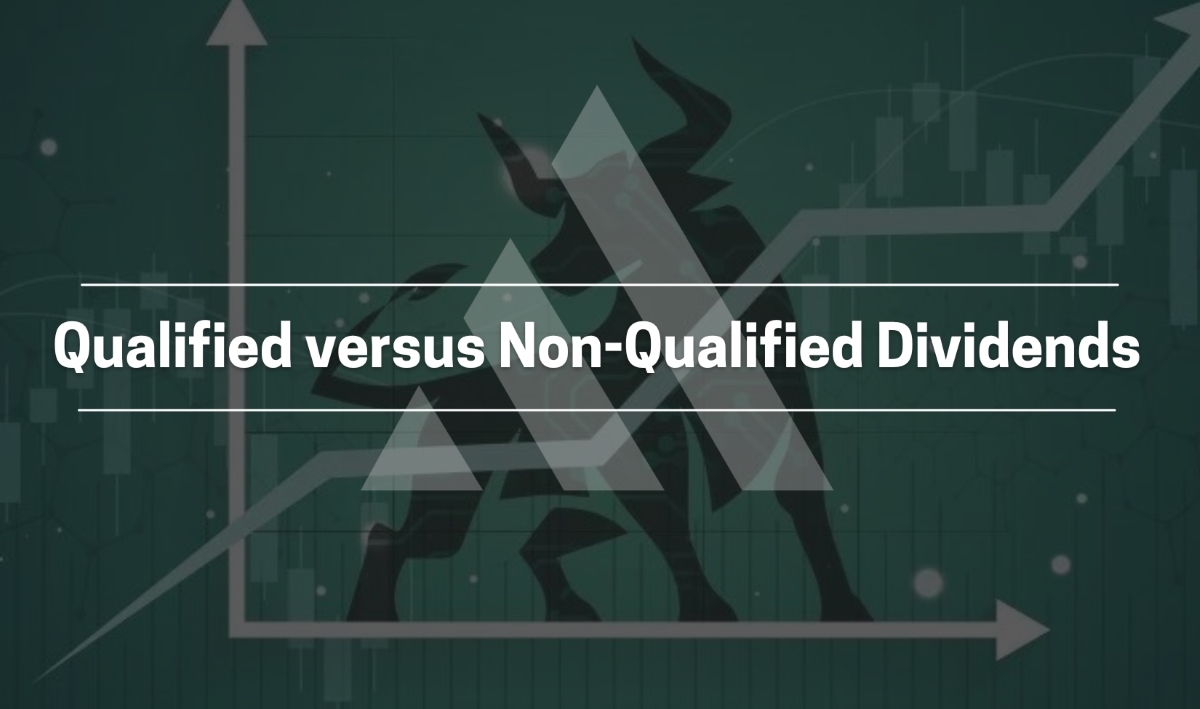

Finance
What Is Non-Financial Risk
Modified: December 30, 2023
Discover the impact of non-financial risks on finance and learn how to mitigate them in this comprehensive guide. Gain valuable insights to protect your financial interests.
(Many of the links in this article redirect to a specific reviewed product. Your purchase of these products through affiliate links helps to generate commission for LiveWell, at no extra cost. Learn more)
Table of Contents
- Introduction
- Definition of Non-Financial Risk
- Types of Non-Financial Risk
- Importance of Managing Non-Financial Risk
- Common Challenges in Managing Non-Financial Risk
- Key Strategies for Managing Non-Financial Risk
- Best Practices for Non-Financial Risk Management
- Case Studies and Examples of Non-Financial Risk
- Conclusion
Introduction
Welcome to the world of non-financial risk! In the vast landscape of finance, there’s much more to consider than just dollars and cents. Non-financial risk plays a crucial role in the success and stability of financial institutions, businesses, and even individuals. Understanding and effectively managing non-financial risk is a critical task for organizations in today’s complex and rapidly changing world.
So, what exactly is non-financial risk? Non-financial risk refers to a broad range of risks that are not directly related to financial variables but have the potential to impact an organization’s financial performance, reputation, and overall well-being. These risks extend beyond traditional financial risks such as credit, market, and liquidity risks, and encompass a wide array of factors that can pose threats to the achievement of strategic objectives.
Non-financial risk can arise from various sources, including operational, reputational, legal and regulatory, environmental, technological, and even social factors. It encompasses risks such as cyber threats, fraud, compliance failures, vendor disruptions, natural disasters, and employee misconduct, to name just a few. These risks have the potential to cause significant harm to an organization, leading to financial losses, reputational damage, legal liabilities, and regulatory sanctions.
The management of non-financial risk has taken center stage in recent years, as organizations have come to recognize the importance of proactively identifying, assessing, mitigating, and monitoring these risks. In an interconnected world where information flows rapidly and stakeholders have higher expectations, the effective management of non-financial risk is essential to safeguarding an organization’s long-term success and sustainability.
This article will delve deeper into the world of non-financial risk, exploring various types of non-financial risk, the importance of managing it, common challenges faced, key strategies for managing non-financial risk, best practices, and real-life case studies. By the end of this article, you’ll gain a deeper understanding of the complexities involved in non-financial risk management and the significance of incorporating it into your organization’s risk management framework.
Definition of Non-Financial Risk
Non-financial risk encompasses a wide range of risks that can impact an organization’s financial stability, reputation, and overall performance. Unlike financial risks, which are related to fluctuations in financial markets and monetary variables, non-financial risks arise from various sources that are not directly tied to monetary factors.
At its core, non-financial risk refers to potential threats that can arise from operational, reputational, legal and regulatory, environmental, technological, and social factors. These risks can manifest in different forms, including but not limited to:
- Operational Risk: This type of risk arises from internal processes, systems, and human errors. It includes risks associated with failures in internal controls, technology disruptions, fraud, and errors in business operations.
- Reputational Risk: Reputational risk pertains to the potential damage to an organization’s reputation and brand image. It can result from negative publicity, customer dissatisfaction, social media backlash, and unethical practices.
- Legal and Regulatory Risk: This type of risk stems from non-compliance with laws and regulations governing the organization’s operations. It includes risks associated with violations of labor laws, intellectual property infringements, and failure to meet regulatory requirements.
- Environmental Risk: Environmental risk refers to the potential impact of an organization’s operations on the environment. It includes risks related to pollution, resource depletion, and climate change, which can result in legal liabilities, reputational damage, and increased operating costs.
- Technological Risk: Technological risk encompasses risks associated with technology failures, cyber threats, data breaches, and information security vulnerabilities. In today’s digital age, organizations face increasing exposure to these risks as they rely heavily on technology infrastructure.
- Social Risk: Social risk involves risks that arise from adverse social factors, such as public sentiment, changing societal norms, and cultural shifts. It includes risks related to public protests, boycotts, and negative impacts on local communities.
It’s important to note that non-financial risks often intersect and can have cascading effects on an organization. For example, a cyber-attack can not only lead to financial losses but also result in reputational damage and regulatory scrutiny. Therefore, managing non-financial risk requires a holistic and integrated approach that takes into account the interconnected nature of these risks.
By understanding and defining non-financial risk, organizations can enhance their ability to identify, assess, and mitigate these risks effectively. This proactive approach enables organizations to minimize potential impacts, protect their reputation, and maintain long-term sustainability in an increasingly complex and uncertain business landscape.
Types of Non-Financial Risk
Non-financial risk encompasses a wide spectrum of risks that can have significant implications for businesses and organizations. These risks can stem from various sources and manifest in different ways. Let’s explore some of the key types of non-financial risk:
- Operational Risk: Operational risk is one of the most common and wide-ranging types of non-financial risk. It refers to the risk of loss resulting from inadequate or failed internal processes, systems, human errors, or external events. This includes risks associated with technology failures, fraud, supply chain disruptions, employee misconduct, and natural disasters.
- Reputational Risk: Reputational risk relates to the potential damage to an organization’s reputation, brand image, and public perception. It can arise from negative publicity, product recalls, customer complaints, data breaches, unethical practices, and social media backlash. Reputational risk can have far-reaching consequences, impacting customer trust, investor confidence, and stakeholder relationships.
- Regulatory and Compliance Risk: Regulatory and compliance risk refers to the risk of non-compliance with laws, regulations, and industry standards. Failure to meet legal and regulatory requirements can result in significant financial penalties, legal liabilities, reputational damage, and loss of business licenses. This includes risks associated with data privacy laws, anti-money laundering regulations, labor laws, and sector-specific regulations.
- Cybersecurity Risk: With the increasing reliance on technology and interconnected systems, cybersecurity risk has become a critical concern for organizations. Cybersecurity risk encompasses the potential threats to the confidentiality, integrity, and availability of information assets. This includes risks such as data breaches, ransomware attacks, phishing attempts, and unauthorized access to sensitive information.
- Environmental Risk: Environmental risk relates to the potential impact of an organization’s activities on the natural environment. This includes risks associated with pollution, resource depletion, climate change, and non-compliance with environmental regulations. Heightened awareness of environmental issues has led to increased scrutiny and potential legal and reputational consequences for organizations that do not adequately address these risks.
- Social and Ethical Risk: Social and ethical risk refers to risks associated with an organization’s social and ethical practices and behaviors. This includes risks such as human rights violations, labor practices, supply chain ethics, and community impact. Failure to address social and ethical risks can result in reputational damage, consumer boycotts, and public backlash.
- Geopolitical and Geographical Risk: Geopolitical and geographical risk encompasses risks associated with political instability, regulatory changes, economic volatility, and natural disasters in different regions. Organizations with operations or business interests in multiple countries face these risks, which can impact operations, supply chains, and financial performance.
It’s important for organizations to identify and understand the various types of non-financial risk they may face. By doing so, they can develop appropriate risk management strategies and controls to mitigate potential impacts, safeguard their operations, and maintain resilience in an increasingly complex and interconnected world.
Importance of Managing Non-Financial Risk
Managing non-financial risk is imperative for the long-term success and sustainability of organizations. Non-financial risks, though intangible, can have far-reaching consequences that impact an organization’s financial performance, reputation, and overall operations. Here are several reasons why managing non-financial risk is of paramount importance:
- Protecting Reputation: A good reputation takes years to build but can be tarnished in an instant due to a non-financial risk event. Reputational damage can lead to a loss of trust from customers, investors, and other stakeholders, resulting in decreased market share, reduced business opportunities, and difficulty in attracting and retaining talent.
- Regulatory Compliance: Non-compliance with laws, regulations, and industry standards can result in severe financial penalties, legal liabilities, and reputational damage. Managing non-financial risk ensures that organizations stay abreast of applicable laws and regulations, reducing the risk of non-compliance and its associated consequences.
- Financial Stability: Non-financial risks can have significant financial implications. Operational disruptions, cyber-attacks, or other non-financial events can lead to direct financial losses, increased costs, and interruptions in business operations. Effective non-financial risk management helps organizations identify and mitigate potential risks, ensuring financial stability and resilience.
- Enhancing Stakeholder Confidence: Stakeholders, including customers, investors, employees, and business partners, increasingly expect organizations to demonstrate effective risk management practices. By proactively managing non-financial risks, organizations instill confidence in their stakeholders, demonstrating their commitment to ethical practices, compliance, and overall business sustainability.
- Avoiding Legal and Regulatory Penalties: Non-compliance with legal and regulatory requirements can result in costly penalties and legal consequences. Proper non-financial risk management helps organizations identify and address compliance gaps, reducing the risk of regulatory breaches and associated financial and legal penalties.
- Improving Decision Making: Effective non-financial risk management provides organizations with valuable insights into potential risks and their potential impacts. This enables informed decision making, as risks are identified and adequately assessed during strategic planning, investment decision, and day-to-day operations.
- Managing Uncertainty: Non-financial risks are inherently uncertain and constantly evolving. By actively managing these risks, organizations can better anticipate and respond to potential threats, reducing the likelihood of surprises and unforeseen negative impacts.
Overall, managing non-financial risk is crucial for organizations to protect their reputation, ensure regulatory compliance, maintain financial stability, foster stakeholder confidence, avoid legal and regulatory penalties, improve decision making, and manage uncertainty. By implementing effective non-financial risk management strategies and controls, organizations can navigate a complex and rapidly changing business environment with greater resilience and success.
Common Challenges in Managing Non-Financial Risk
Managing non-financial risk presents unique challenges for organizations. These challenges can stem from the diverse nature of non-financial risks and the complex and ever-evolving business environment. Understanding and addressing these challenges is essential for effectively managing non-financial risk. Here are some common challenges faced:
- Lack of Awareness: Many organizations still prioritize financial risks and overlook the importance of non-financial risk management. This lack of awareness can hinder the allocation of resources, expertise, and systems necessary for effectively managing non-financial risk.
- Complexity and Interconnectedness: Non-financial risks can be complex and interconnected, making it challenging to identify, assess, and prioritize them. Failure to recognize the interdependencies among different risks can result in inadequate risk management strategies and controls.
- Data Availability and Quality: Non-financial risk management relies on accurate and timely data, including information on past incidents, operational processes, and emerging risks. However, organizations often face challenges in collecting, analyzing, and integrating relevant data into their risk management frameworks.
- Culture and Mindset: Establishing a risk-aware culture and mindset throughout an organization can be challenging. Employees may resist or overlook non-financial risks, leading to a lack of awareness and proper risk mitigation practices. Building a risk-aware culture requires leadership commitment, effective communication, and ongoing training and awareness programs.
- Risk Appetite and Tolerance: Non-financial risk management requires organizations to define and communicate their risk appetite and tolerance levels. However, determining acceptable levels of non-financial risk can be subjective and complex, as it involves balancing risk mitigation with business objectives and strategic initiatives.
- Emerging Risks: The business landscape is constantly evolving, and new non-financial risks continue to emerge. Staying ahead of emerging risks, such as technological advancements, geopolitical shifts, and evolving regulatory requirements, requires proactive monitoring, scenario planning, and agile risk management strategies.
- Coordination and Collaboration: Non-financial risks often cut across different departments and functions within an organization. Achieving effective coordination and collaboration among these entities can be challenging, particularly in large organizations with decentralized operations. Silos and communication gaps can hinder the integration of non-financial risk management into broader risk management processes.
- Resource Constraints: Allocating sufficient resources, including financial, human, and technological resources, for non-financial risk management can be a challenge. Limited resources may result in inadequate risk assessment, outdated technology infrastructure, and a lack of specialized skills and expertise.
To address these challenges, organizations should prioritize non-financial risk management, raise awareness and understanding of non-financial risks, invest in data collection and analysis capabilities, foster a risk-aware organizational culture, establish clear risk appetite and tolerance levels, and promote coordination and collaboration among departments. Additionally, organizations should continuously monitor emerging risks and allocate sufficient resources to support robust non-financial risk management practices.
By proactively addressing these challenges, organizations can enhance their ability to identify, assess, and mitigate non-financial risks, ultimately strengthening their overall risk management framework and ensuring sustainable success.
Key Strategies for Managing Non-Financial Risk
Managing non-financial risk requires a proactive and integrated approach that encompasses various strategies and practices. While the specific strategies may vary depending on the organization and its risk profile, there are some key strategies that can help effectively manage non-financial risk. Here are a few essential strategies:
- Risk Identification and Assessment: The first step in managing non-financial risk is to identify and assess the various risks specific to the organization. This involves conducting risk assessments, using techniques such as risk mapping, scenario analysis, and data analysis, to gain insights into potential risks and their potential impacts.
- Establishing a Risk Management Framework: Developing and implementing a robust risk management framework is crucial for managing non-financial risk. This framework should include clear policies, procedures, and risk management processes that outline roles and responsibilities, risk appetite, risk tolerance, and reporting mechanisms.
- Culture of Risk Awareness: Fostering a risk-aware culture throughout the organization is vital. This involves promoting awareness and understanding of non-financial risks at all levels, encouraging open communication, and providing training and education on risk management principles and practices. Employees should understand their roles in managing risks and feel empowered to raise concerns and contribute to risk mitigation efforts.
- Effective Risk Governance: Establishing a robust risk governance structure is essential for managing non-financial risk. This includes assigning accountability and responsibility for risk management, defining clear lines of reporting and escalation, and integrating risk management into decision-making processes. Regular risk oversight and reporting by the board of directors or a dedicated risk committee can ensure transparency and accountability.
- Controls and Mitigation Measures: Implementing controls and mitigation measures is critical for managing non-financial risk. This may involve establishing effective internal controls, conducting regular audits and assessments, and implementing risk mitigation strategies and practices. Controls should be regularly monitored and reviewed to ensure their effectiveness in managing risks.
- Continuous Monitoring and Reporting: Ongoing monitoring and reporting of non-financial risks are essential to detect emerging risks, identify changes in risk profile, and evaluate the effectiveness of risk mitigation strategies. Regular reporting to management and relevant stakeholders enables informed decision making and provides visibility into the organization’s risk management efforts.
- Stakeholder Engagement: Engaging with stakeholders, including customers, investors, regulators, and business partners, is crucial in managing non-financial risk. Seeking feedback, understanding stakeholder expectations, and addressing their concerns can help build trust, manage reputational risks, and ensure alignment of risk management efforts with stakeholder expectations.
- Adapting to Evolving Risks: Non-financial risks are dynamic and ever-evolving. Organizations must stay abreast of emerging risks, regulatory changes, technological advancements, and industry trends. Regular risk assessments, horizon scanning exercises, and engagement with industry forums can help organizations adapt their risk management strategies to effectively address evolving risks.
By following these key strategies, organizations can enhance their ability to identify, assess, mitigate, and monitor non-financial risk. These strategies provide a framework for building a robust risk management culture, implementing effective risk mitigation measures, and ensuring that non-financial risks are adequately addressed in the organization’s overall risk management strategy.
Best Practices for Non-Financial Risk Management
Effective non-financial risk management involves implementing best practices that enable organizations to identify, assess, mitigate, and monitor risks in a comprehensive and proactive manner. While the specific practices may vary depending on the organization’s size, sector, and risk profile, there are some common best practices that can guide non-financial risk management efforts. Here are a few key best practices:
- Top-Down Commitment: Non-financial risk management starts with strong leadership commitment. Executives and senior management should actively support and promote a culture of risk awareness and accountability throughout the organization.
- Risk Appetite and Tolerance: Clarifying and communicating the organization’s risk appetite and tolerance levels is crucial. This ensures that risk decisions align with the organization’s overall objectives and strategic initiatives.
- Integrated Risk Management: Non-financial risk management should be integrated into the organization’s overall risk management framework. This involves aligning non-financial risk management processes with financial risk management processes to provide a holistic view of risks.
- Robust Risk Assessment: Conducting regular and comprehensive risk assessments is essential. This includes identifying and assessing risks, analyzing their potential impacts, and prioritizing risks based on their likelihood and severity.
- Effective Controls and Mitigation: Implementing controls and mitigation measures is vital for managing non-financial risks. Controls should be designed to mitigate identified risks and should be regularly monitored and tested for their effectiveness.
- Continuous Monitoring and Reporting: Implementing ongoing monitoring and reporting mechanisms is critical. This enables organizations to track the effectiveness of risk mitigation efforts, identify emerging risks, and report on the organization’s risk management performance.
- Regular Training and Awareness: Providing regular training and awareness programs on non-financial risk management is essential. This ensures that employees understand their roles and responsibilities in managing risks and are equipped with the necessary knowledge and skills.
- Engaging Stakeholders: Actively engaging with stakeholders, including customers, investors, regulators, and business partners, is key. This helps to understand their expectations and concerns regarding non-financial risks and foster trust and transparency.
- Adapting to Emerging Risks: Organizations need to be agile and adaptive in managing non-financial risks. This involves staying updated on emerging risks, regulatory changes, and industry trends, and regularly reviewing and updating risk management strategies accordingly.
- Continuous Improvement: Establishing a culture of continuous improvement is essential. Organizations should regularly evaluate and enhance their non-financial risk management processes, identifying areas for improvement and implementing corrective measures.
By following these best practices, organizations can enhance their non-financial risk management capabilities. These practices provide a framework for effective risk identification, assessment, mitigation, and monitoring, ensuring that non-financial risks are managed in a systematic and proactive manner. The effective implementation of these practices can help organizations safeguard their reputation, ensure regulatory compliance, and maintain long-term sustainability in an increasingly complex and interconnected business environment.
Case Studies and Examples of Non-Financial Risk
Examining real-life case studies and examples of non-financial risk can provide valuable insights into the potential consequences and impacts of inadequate risk management. Here are a few notable examples:
- Equifax Data Breach: In 2017, Equifax, one of the largest credit reporting agencies, experienced a massive data breach that exposed sensitive personal information of over 147 million individuals. The breach resulted from a failure to implement proper cybersecurity measures, leading to significant reputational damage, financial losses, and regulatory penalties.
- BP Deepwater Horizon Oil Spill: In 2010, the Deepwater Horizon offshore drilling rig, operated by BP, experienced a catastrophic explosion and subsequent oil spill in the Gulf of Mexico. The incident resulted in the loss of human lives, extensive environmental damage, reputational harm, legal liabilities, and billions of dollars in cleanup and compensation costs.
- Wells Fargo Sales Practices Scandal: Wells Fargo, a prominent U.S. bank, faced a major scandal in 2016 when it was revealed that employees had created millions of unauthorized customer accounts to meet aggressive sales targets. The scandal resulted in significant reputational damage, regulatory fines, legal settlements, and the departure of several top executives.
- Toys “R” Us Bankruptcy: Toys “R” Us, a well-known toy retailer, filed for bankruptcy in 2017 due to various non-financial risks, including intense competition, changing consumer preferences, and a heavy debt burden. The bankruptcy led to store closures, job losses, and financial losses for investors.
- Nike Sweatshop Controversy: Nike, a global sportswear company, faced widespread criticism and a major reputational crisis in the 1990s due to allegations of sweatshop labor practices in its overseas factories. The controversy resulted in public protests, consumer boycotts, and pressure on the company to improve its labor practices and supply chain transparency.
These case studies highlight the potential consequences of inadequate non-financial risk management. Organizations that fail to address risks such as cybersecurity, environmental impact, ethical practices, and regulatory compliance may face severe financial losses, reputational damage, legal liabilities, and even bankruptcy. The examples also emphasize the importance of proactive risk identification, robust controls, effective stakeholder engagement, and continuous improvement efforts to prevent and mitigate such risks.
By studying these case studies and learning from the experiences of other organizations, businesses can gain insights into the real-world impacts of non-financial risk, reinforcing the critical importance of managing these risks effectively to protect their stakeholders and ensure long-term success.
Conclusion
In today’s complex and interconnected business landscape, managing non-financial risk is vital for organizations seeking long-term success and sustainability. Non-financial risks, which encompass a wide range of operational, reputational, legal, environmental, technological, and social factors, can have significant impacts on an organization’s financial performance, reputation, and overall well-being.
Throughout this article, we explored the definition of non-financial risk, the various types of non-financial risk, and the importance of managing these risks effectively. We discussed common challenges faced in non-financial risk management and highlighted key strategies and best practices for addressing these challenges.
By implementing effective non-financial risk management strategies, organizations can protect their reputation, ensure regulatory compliance, maintain financial stability, foster stakeholder confidence, and make informed decisions. Engaging in proactive risk identification, robust controls and mitigation measures, continuous monitoring, and stakeholder engagement are fundamental elements of effective non-financial risk management.
Real-life case studies and examples demonstrated the potential consequences of inadequate risk management. Organizations that have experienced data breaches, environmental disasters, compliance failures, reputational crises, and other non-financial risk events have faced severe financial losses, legal liabilities, and reputational damage. These examples highlight the importance of proactive risk management and the potential impacts of overlooking or neglecting non-financial risks.
In conclusion, managing non-financial risk is an essential component of an organization’s overall risk management framework. By integrating non-financial risk management into strategic decision making, having the right governance and controls in place, and continuously monitoring and adapting to emerging risks, organizations can navigate the complexities of the business environment and ensure long-term success.
Through a holistic and proactive approach to non-financial risk management, organizations can mitigate potential risks, protect their stakeholders, and create a resilient and sustainable future.














